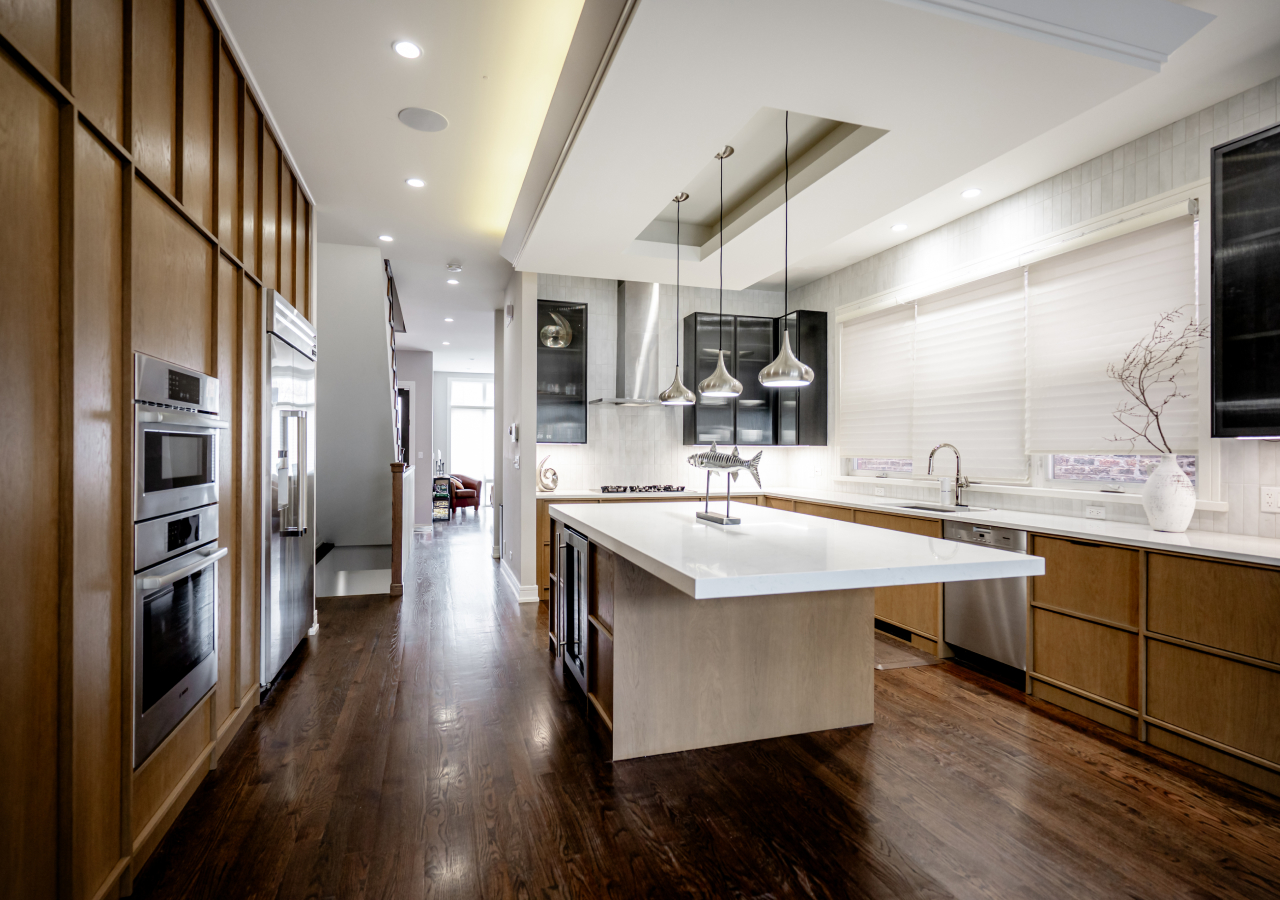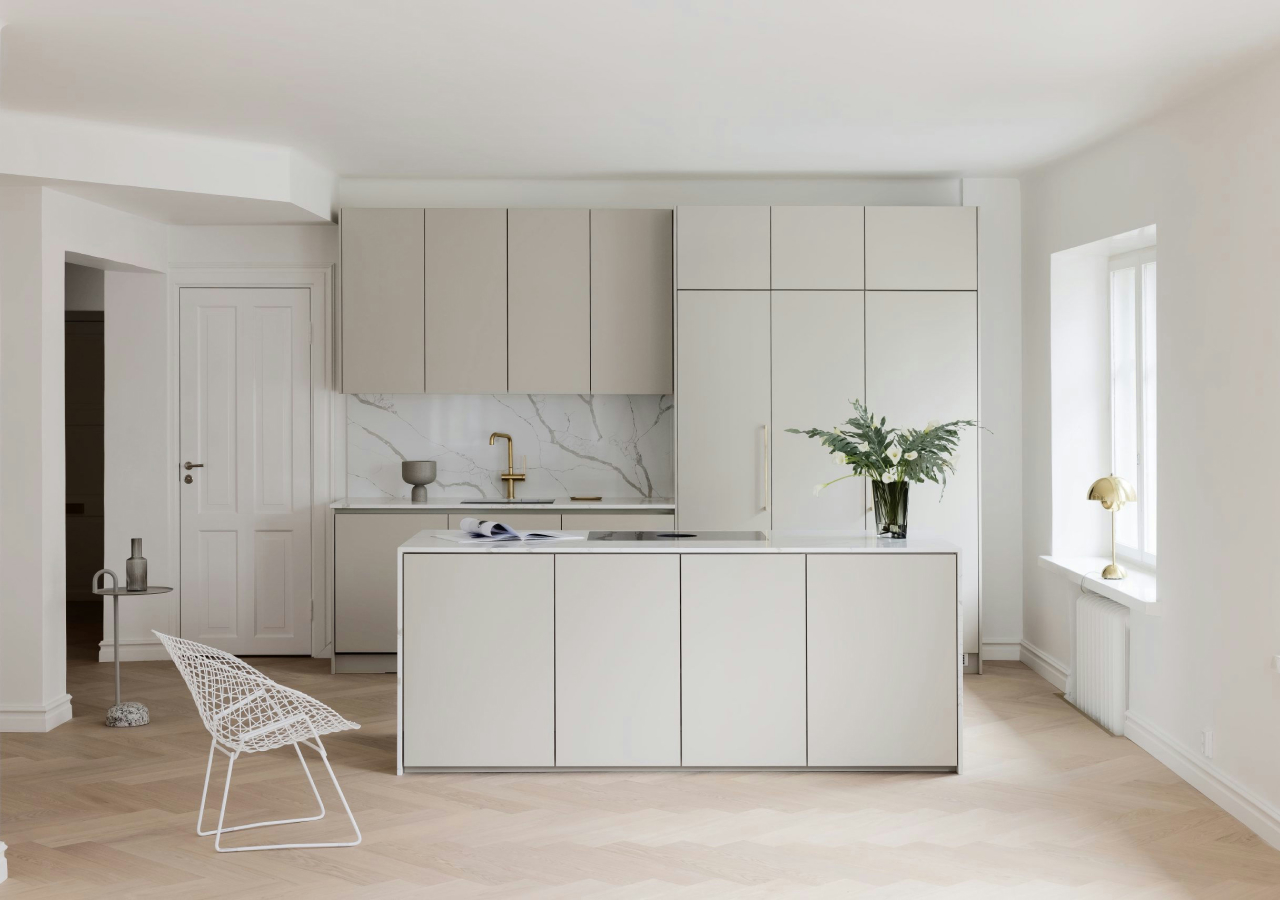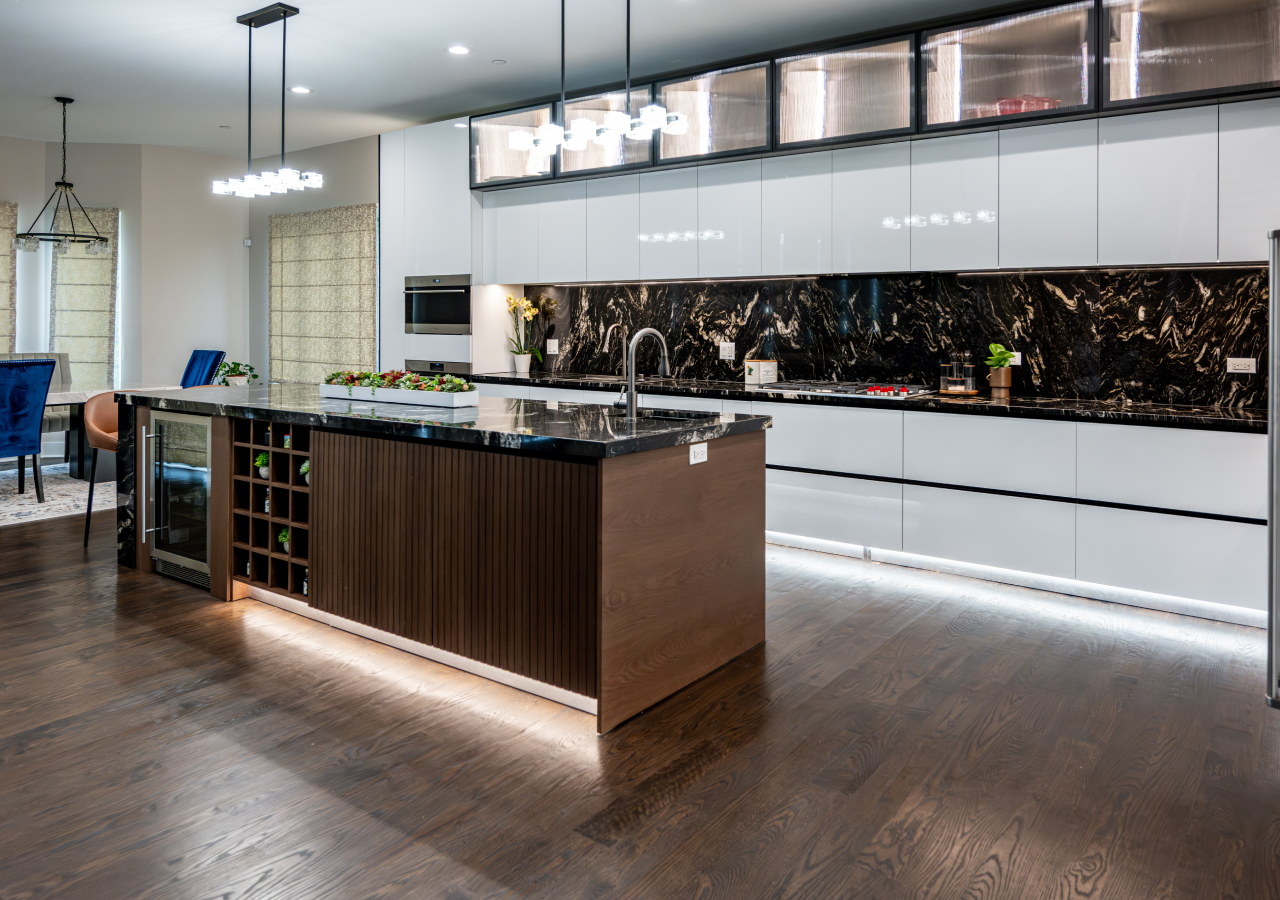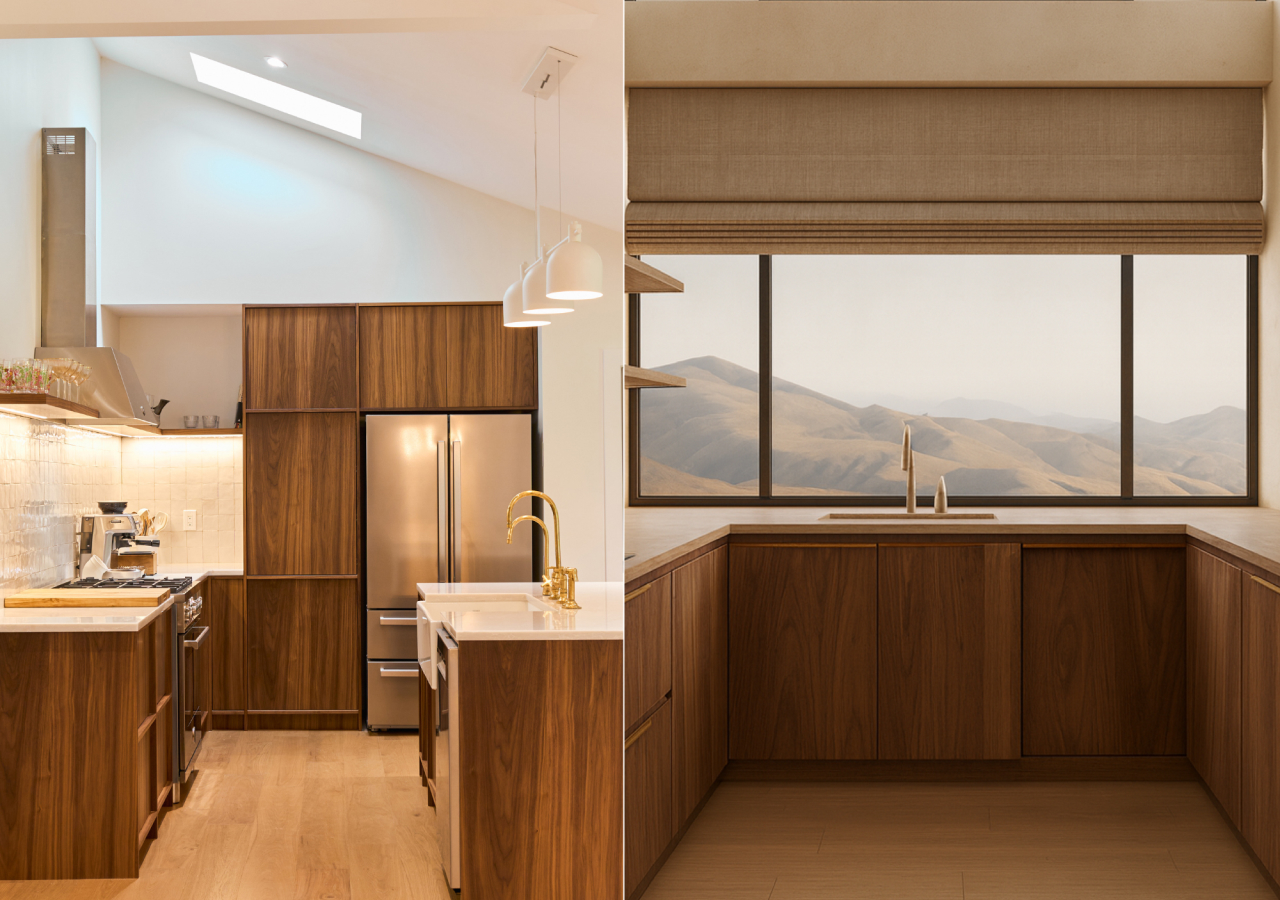The kitchen has become the living center of the home, where the family gathers, builds routines and connections, and guests immerse themselves in a comfortable, warm atmosphere. Designing it calls for careful planning.
When designing a kitchen, homeowners are faced with the choice between an open or closed layout. An open kitchen combines the space with the living room and dining room, creating a feeling of freedom and visual lightness, while a closed kitchen provides privacy, functionality, and a clear division of areas.
The choice depends on lifestyle, cooking habits, how often you entertain guests, and preferences in organizing space. Understanding the pros and cons of each option will help you find the best solution for your home.
What Is an Open-Plan Kitchen?

An open-plan kitchen is a layout without full-height partitions, integrated with the living and/or dining area. It typically uses an island or peninsula as a soft divider to keep circulation open while adding prep and seating. Benefits include continuous sightlines, daylight, and shared social space.
Most often, such layouts use islands or peninsulas that form work and dining areas without restricting movement and a sense of volume. An open kitchen allows for maximum natural light and creates a feeling of airiness and spaciousness, which is especially important for small apartments and compact houses.
An open layout kitchen makes it easier to create a cohesive interior with uniform flooring, thoughtful lighting, and color schemes. It allows you to visually expand the space by combining functional areas and provides flexibility in the placement of furniture and appliances.
Pros and Cons of Open-Plan Kitchens

Open plans trade social connection and light for more noise/odors and stricter tidiness. Therefore, it is worth considering their advantages and disadvantages in detail.
Pros of Open-Plan Kitchens
- Social connection: The cook stays part of conversations, kids’ homework, and hosting.
- Light and volume: Fewer walls mean better daylight and a stronger sense of spaciousness.
- Flexible zones: Islands/peninsulas double as prep, dining, serving, or work surfaces.
- Entertaining friendly: Buffets, casual seating, and movement between rooms feel natural.
- Unified design language: Continuous flooring and coordinated finishes create a cohesive look.
Cons of Open-Plan Kitchens
- Noise and odors: Sound from appliances and cooking smells travels farther.
- Visual tidiness required: Mess is visible from living spaces, which raises the bar on organization.
- Potential storage trade-offs: Fewer full walls can limit tall cabinets and closed storage.
- Comfort control: Large volumes can be harder to heat/cool efficiently.
- Privacy: Not ideal for intensive cooks who prefer to focus without distractions.
What Is a Closed Kitchen?
.webp)
A closed kitchen is an enclosed room with walls and a door, separating cooking from living areas. Core benefits include best-in-class odor/noise control and higher storage density thanks to more wall space. This layout suits intensive cooks and households prioritizing privacy and order.
In addition, a closed kitchen provides the opportunity for a more compact and rational organization of the work area and storage, allowing you to place large appliances and dishware storage. This layout is relevant for families who prefer privacy and a calm atmosphere while cooking.
Pros and Cons of Closed Kitchens

Closed kitchens create functionally isolated spaces where control over cooking conditions is maximized. Therefore, it is important to keep the following points in mind.
Pros of Closed Kitchens
- Privacy and focus: The cook can concentrate and contain activity out of view.
- Odor and noise control: Doors and walls keep smells and sound in the kitchen.
- Storage density: More walls enable additional tall cabinets and pantry solutions.
- Energy efficiency: A smaller conditioned volume is often easier to heat or cool.
- Ergonomic clarity: It’s straightforward to optimize the work triangle and task lighting.
Cons of Closed Kitchens
- Reduced social connection: Separation can isolate the cook during gatherings.
- Less daylight: Interior rooms may need more artificial lighting.
- Perceived tightness: Narrow rooms and doorways can feel cramped if not planned well.
- Stylistic perception: In open-living trends, fully closed rooms can feel traditional in some markets.
See how these layouts look in real projects.
What Do Open and Closed Kitchens Have in Common?

Despite their obvious differences, both concepts pursue the same goal: to create a functional, convenient, and comfortable space for cooking. The main elements of the layout—the work area, the location of appliances, and the storage system—are critically important for both open and closed kitchens.
The quality of materials, lighting, and color harmony are universal criteria for a successful interior. Any kitchen, regardless of type, should be convenient to work in, easy to clean, and adaptable to the individual needs of the family, including zoning, ergonomics, and functional space distribution.
How to Choose: A Simple Decision Framework

The choice of kitchen type is determined by the family's lifestyle, cooking style, and preferences in terms of space organization. Factors such as the number of family members, the intensity of cooking, the need for communication, and the visual perception of space are important.
For those who enjoy spending time together and actively interacting with guests, an open kitchen is a convenient solution, providing a bright and spacious atmosphere. It allows you to cook and watch what is happening in the living room at the same time, integrating different areas.
A closed kitchen is better suited for those who cook complex dishes and value order and privacy. It creates a separate space where you can optimally place appliances, organize storage, and minimize noise. The size of the room and the architectural features of the house also influence the choice: an open kitchen visually expands small apartments, while a closed kitchen allows you to separate areas in large houses.
Hybrid Solutions That Work for Most Homes

Hybrid solutions, like sliding partitions, glass panels, or islands, let you have the best of both worlds. They create a visual separation, control noise and smells, and don't make the space feel smaller.
Bar counters, peninsulas, and color zoning help preserve the social aspect of an open kitchen while providing the order and privacy of a closed one. Thoughtful placement of appliances, storage organization, and convenient access to work surfaces create a functional space tailored to the needs of a particular family and the architecture of the home.
Conclusion
Choosing between an open and closed kitchen requires analyzing your family's needs, cooking habits, and the architectural features of the room. Compromise solutions allow you to combine the best aspects of both approaches, creating a unique and comfortable space. Proper layout, thoughtful lighting, high-quality materials, and furniture make the kitchen the center of the home, where it is comfortable to cook, socialize, and spend time together.





